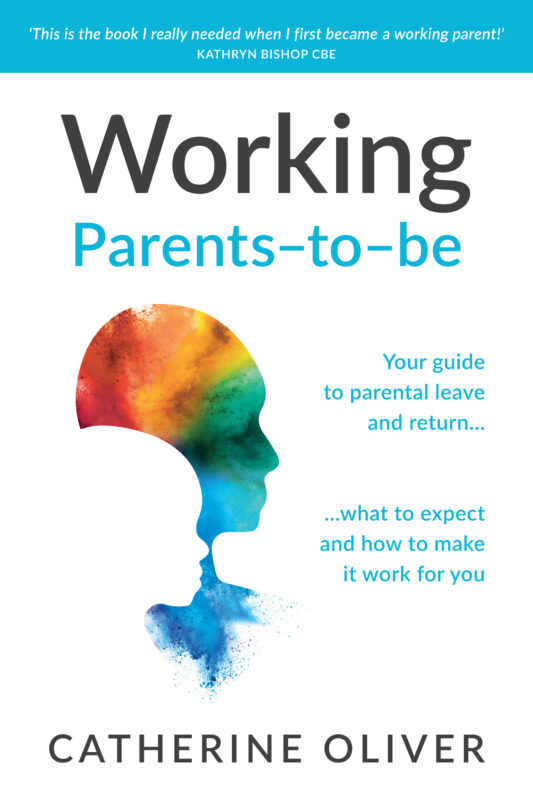Taking a period of extended leave from work when you’re having a child can be both exciting and daunting. You might get as far as a handover plan, but not give it much further thought until you’re actually on leave. Your confidence may have dipped or you may be wondering how you’re going to fit everything in. There are some simple steps you can take that might make all the difference.
First and foremost, think of parental leave in the same way you would any other project you might work on. Create a plan and break it into steps: starting with before you begin your leave, all the way through to your return. You can adjust it as you go, but the most important thing is creating a plan that works for you, your family, your work role and your employer. Just like every pregnancy, every parental leave is different.
Before you go on parental leave
There’s a lot you can do before you start your leave that will pay
dividends later. For example, consider the contact with work that you do
(and don’t want) while you’re away and share your preferences. A great
way to think about this is using the lens of what, when and how: what you want to keep in touch about ( team social news, updates on clients / projects / business priorities or changes etc); when you
want to hear about them (such as only social stuff in the first three
months and everything in the last couple of months before you return); how you want to be kept in touch (via a friend on the team, or your manager, by email or face-to-face etc).
There are some conversations that are much easier to have before you
start your leave: such as your possible options for changing your work
arrangements. Talking to your manager about this before you go when
there is no pressure on either side can give you both really useful
ideas to think through before you have to talk about it properly.
It can also be helpful to think about whether you’d like to make use
of KIT days (Keeping In Touch days). Discuss this option with your
manager so they have you in mind in the months before your return and
can invite you to come along when you can.
While you’re away
Whatever you decide about contact, keeping in touch in some way while
you’re on leave will make it much easier when it comes to working out
your return plan. This includes key issues such as agreeing your return
date, making any changes to your working arrangement and how you use
KIT days and any accrued annual leave.
Your return date may seem straightforward, but if you want it to be
any different to 52 weeks you need to agree this eight weeks before you
go back. And if you want to change your working pattern, it’s a really
good idea to open those conversations well ahead of this. Give yourself –
and your employer – plenty of time. You want to be able to discuss
options so that you can come up with an arrangement that’s going to work
for you both.
When it comes to the return itself, think about whether ‘ramping up’
with a few days a week to kick off with might work better than
switching overnight from full-time parent to full-on working parent. KIT
days and accrued leave are great tools to use to help make this happen.
When you return to work
It takes time to adjust to being a working parent: not just for you,
but for your child, the rest of your family and your employer too.
You’re not a new starter, but you’ve not just been away on holiday
either. So, be kind to yourself. At work, try to use the ‘golden time’
in your first few weeks back to focus on how best to get back up to
speed. Don’t be afraid to ask questions. You will need time and space
getting to know new faces, catching up with the old ones, getting clear
on the priorities of your team and what these mean for you. Be careful not to get overwhelmed by big new projects in the early weeks back.
On the home front, make sure you’re ready for the inevitable hiccups
with childcare (they will happen, so try to have a plan B ready if you
can) and have some conversations around rebalancing the workload at
home. It’s all too easy for a parent on leave who has taken on
responsibility for everything from shopping and cooking to washing and
cleaning to keep doing these when they go back – and then wondering why
they are burning out! It’s a big adjustment for everyone, especially if
your family has two working parents.
Establish who will be doing not just pick-up and drop-off and chores, but bath time, and story time and so on too.
Perhaps the best advice of all, whether at work or at home, is to
keep talking. Don’t give little niggles a chance to become bigger issues
and share your experiences with other parents who are facing the same
challenges – it can make all the difference!
Catherine Oliver is a diversity and inclusion advisor who specialises in supporting working parents. Her new book Working Parents-to-be
is a step-by-step guide to parental leave and return. It’s designed to
help new or soon-to-be parents and managers to recognise the challenges
of becoming a working parent and create a personalised plan to overcome
them. It’s available from Amazon, price £13.85 paperback, and good
bookstores.
www.amazon.co.uk













